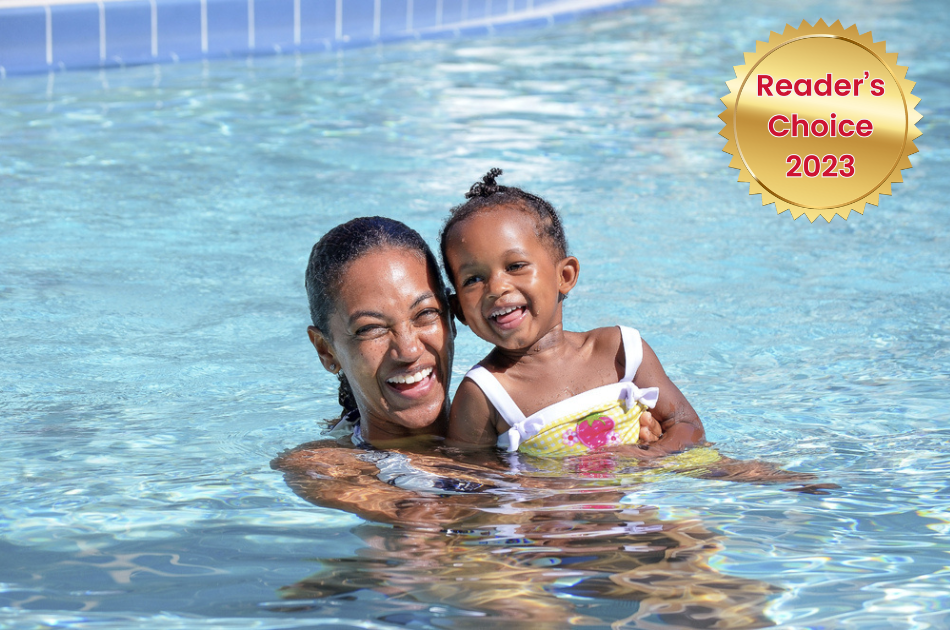DECEMBER 21ST, 2023 UPDATE: This solution is a Reader’s Choice selection of 2023! Thank you for nominating the solutions that left you feeling optimistic this year.
Swimming in floating pools in the Hudson and East Rivers was formerly a popular way for New Yorkers to escape the oppressive summer heat. These municipal baths provided a safer alternative to swimming in the river, providing much-needed relief. However, sanitation problems forced their shutdown.
Could New Yorkers once again turn to their rivers for relief as the city faces increasingly dangerous heat waves? The creators of +POOL believe so. Their ambitious plan calls for constructing a cross-shaped, Olympic-size pool in the East River that will be distinguished from its ancient forerunners by one critical feature: improved filtration. This program provides a new, supervised location for New Yorkers to escape the heat, with one million gallons of purified East River water flowing through the pool every day. The initiative, first proposed in 2010, has gained fresh importance as climate change causes more frequent and intense heat waves.
+POOL’s vision: A refreshing retreat in the heart of New York
New York now has the highest UHI index in the country, with urban heat islands averaging 9.5 degrees hotter than surrounding locations. The weight of this excessive heat falls disproportionately on low-income communities of color, owing to a heritage of discriminatory redlining laws that have left communities with few green spaces and an abundance of heat-absorbing asphalt and concrete. Furthermore, many of these towns do not have safe swimming areas.
According to Kara Meyer, Managing Director of +POOL, “the increased instances of extreme heat are only making public [swimming] access more desirable.” Comprehensive cleanups, cutting-edge filtration technology, and advanced water-quality monitoring are on the agenda to make river swimming a popular and safe alternative.
Cities embrace river swimming to beat the heat, a global trend
New York isn’t the only city rethinking its connection with its rivers. Cities around the world are opening up their rivers and lakes to swimmers in response to climate change’s increasing frequency, severity, and duration of heat waves.
River swimming has long been popular in European towns such as Copenhagen, Berlin, Zurich, Munich, and Vienna. Paris is spending $1.5 billion to clean up the Seine and make it swimmable in time for the Olympic Games in 2024.
Boston, Chicago, Washington, D.C., and Portland, Oregon have already either welcomed river swimmers or have plans to create swimming infrastructure. Waterfront Alliance‘s Jake Madelone, Senior Waterfront Education Coordinator, underlines that “as a climate solution, being able to swim in your local waters just seems like a no-brainer.”
Making urban swimming inclusive and accessible
Urban waterways are undeniably important climate solutions, but their accessibility varies by community. The historical discrepancy in swimming expertise and drowning rates between Black and white Americans, a legacy of segregation, exacerbates this injustice.
Vivek Shandas, a professor of urban climate adaptation at Portland State University, highlights the importance of any strategy to establish additional swimming pools to redress past exclusion. He claims that “welcoming people into these outdoor swimmable spaces is important” and asks for concerted efforts to ensure everyone feels like they belong.
Swimming lessons, frequently provided by lifeguards, are critical for increasing swimming abilities, but a statewide scarcity of lifeguards restricts access to such classes. Since 2015, +POOL volunteers have begun providing free swimming lessons at city pools to address this issue. In addition, the organization is working with the Henry Street Settlement, a local nonprofit, to create a lifeguard career development program. According to Kara Meyer, “It’s not equitable access to the river if people don’t know how to swim or don’t have the opportunity to learn.”
New York City’s planning department announced a 10-year comprehensive waterfront plan in 2021, intending to “promote opportunities to get onto and into the water.” This plan includes floating river pool proposals as well as long-term expenditures in improving water quality and waterfront infrastructure. Mayor Eric Adams has indicated support for +POOL, and numerous proposals currently before the City Council seek to expand access to free swimming lessons, build new pools in Environmental Justice communities, and address the lifeguard shortage.
If +POOL’s concept becomes a reality, it might pave the way for communities to reconnect to their surrounding waterways. “We should be able to enjoy our natural environment, particularly in New York, where we have this resource all around us,” says Kara Meyer, encapsulating the potential of this project. There is so much opportunity to be had. We simply need to create specified, secure access points.” In an era of rising urban heat, these entry points could become the cool, inclusive areas that cities need.











